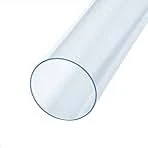Aug . 24, 2024 00:47 Back to list
High-Density Polyethylene Corrugated Pipes for Efficient Drainage Solutions and Applications
Understanding HDPE Corrugated Pipe A Versatile Solution for Infrastructure Needs
High-Density Polyethylene (HDPE) corrugated pipes have become an indispensable component in various infrastructure projects, owing to their excellent durability, resistance to chemicals, and flexibility. As more construction and engineering professionals turn to innovative materials for drainage, sewage systems, and stormwater management, HDPE corrugated pipes stand out due to their myriad benefits.
What is HDPE?
High-Density Polyethylene, commonly known as HDPE, is a thermoplastic polymer that is characterized by high strength-to-density ratio and resistance to impact and chemicals. These properties make HDPE an excellent choice for a variety of applications, including piping systems. When formed into a corrugated shape, the pipe gains additional structural integrity and flexibility, making it suitable for various applications in both civil engineering and construction.
Advantages of HDPE Corrugated Pipes
1. Durability One of the primary advantages of HDPE corrugated pipes is their durability. They can withstand harsh environmental conditions, including extreme temperatures, chemicals, and abrasion. This longevity reduces the need for frequent replacements and maintenance, leading to cost savings in the long run.
2. Lightweight and Easy to Handle HDPE pipes are considerably lighter than traditional materials such as concrete or clay. This feature simplifies transportation and installation, reducing labor costs. Their lightweight nature makes them easier to maneuver on construction sites, even in challenging terrains.
3. Flexible Design The flexibility of HDPE corrugated pipes allows for easy installation in tight spaces and curved layouts. They can be bent and shaped without breaking, which is particularly advantageous in complex drainage systems. This adaptability also means they can follow the natural contours of the land, minimizing the need for extensive excavation.
hdpe corrugated pipe

4. Excellent Flow Characteristics The smooth inner wall of HDPE corrugated pipes promotes better flow capabilities, minimizing the risk of blockages. This feature is particularly beneficial in stormwater drainage systems where efficient water evacuation is crucial. The reduced friction loss also contributes to energy savings in pressure applications.
5. Resistance to Root Intrusion Unlike traditional materials, HDPE is resistant to root intrusion, which is a common issue in drainage systems. This characteristic extends the service life of the pipes and reduces the cost associated with repairs and maintenance due to blockages caused by roots.
Applications of HDPE Corrugated Pipes
HDPE corrugated pipes are utilized in a variety of applications, including
- Stormwater Management These pipes are commonly used in storm drains, culverts, and other systems designed to manage rainwater runoff effectively. - Sewage Systems Their resistance to corrosion and chemicals makes them ideal for handling wastewater. - Agricultural Drainage In agricultural settings, these pipes help in managing water flow and preventing waterlogging. - Landfill and Waste Management HDPE corrugated pipes can be used for leachate collection and other waste management purposes.
Conclusion
In summary, HDPE corrugated pipes present a modern, efficient, and reliable solution for a wide range of drainage and piping needs. Their durability, lightweight nature, and flexibility make them a preferred choice among engineers and construction professionals. As the demand for sustainable and cost-effective building materials continues to rise, HDPE corrugated pipes will undoubtedly play a critical role in shaping the future of infrastructure development. By embracing innovative materials like HDPE, we can enhance our infrastructure while promoting longevity and environmental stewardship.
-
High-Quality PPR Pipes and Fittings Durable ERA PPR & PVC PPR Solutions
NewsJul.08,2025
-
Black HDPE Cutting Board - Durable, Non-Porous & Food Safe HDPE Plastic Cutting Board
NewsJul.08,2025
-
High-Quality CPVC Panel Durable HDPE & PVC Panels Supplier
NewsJul.08,2025
-
Double PE Welding Rod Supplier - High Strength, Durable & Versatile Welding Solutions
NewsJul.07,2025
-
High-Quality PVC-O Pipe Supplier Durable 75mm PVC Pipe & Connections Leading PVC Pipe Company
NewsJul.07,2025
-
HDPE Drainage Pipe Supplier – Durable & Corrosion-Resistant Solutions
NewsJul.06,2025

